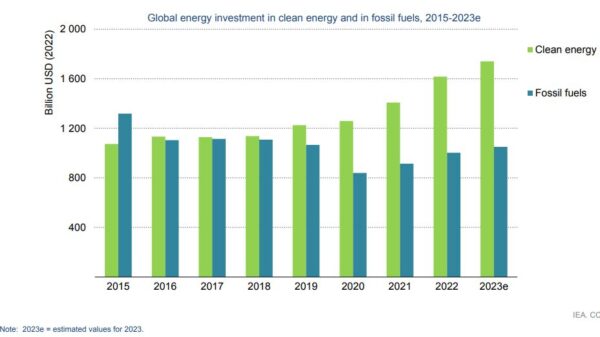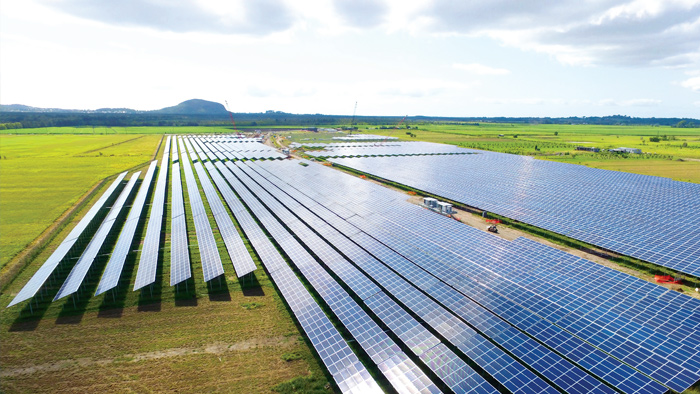Global investment in solar power is expected to outstrip spending on oil production for the first time this year as clean energy spending outpaces that for fossil fuels, according to a report issued by the International Energy Agency (IEA).
In its latest World Energy Investment report, the IEA says about $4.3 trillion is set to be invested globally in energy in 2023, of which more than $2.61 trillion is expected to go to clean energy technologies, including renewable power, transmission infrastructure, energy storage, low-emissions fuels and electric vehicles (EVs).
The remainder, slightly more than $1.54 trillion, is going to coal, gas and oil.
IEA Executive Director Fatih Birol said annual clean energy investment is expected to rise by 24% between 2021 and 2023 compared with a 15% rise in fossil fuel investment over the same period.
“Clean energy is moving fast, faster than many people realise,” he said. “This is clear in the investment trends, where clean technologies are pulling away from fossil fuels.”
“For every dollar invested in fossil fuels, about 1.7 dollars are now going into clean energy. Five years ago, this ratio was one-to-one. One shining example is investment in solar, which is set to overtake the amount of investment going into oil production for the first time.”

In 2023, solar power spending is due to reach about $583 billion (USD 380 billion) on a yearly basis while the IEA expects investment in oil exploration and extraction should come in at $568 billion (USD 370 billion).
“Solar is the star performer,” the IEA said. “More than USD 1 billion per day is expected to go into solar investments in 2023.”
Led by solar, low-emissions electricity technologies are expected to account for almost 90% of investment in power generation. The IEA said consumers are also investing in more electrified end-uses with global heat pump sales producing double-digit annual growth since 2021 while EV sales are expected to leap by a third this year after already surging in 2022.
The IEA said the rise in clean energy investments has been boosted by a variety of factors, including high oil and gas prices and a worry about supplies, and enhanced policy support through instruments like the US Inflation Reduction Act.
National energy security goals, decarbonisation targets, and a focus on industrial strategy as countries seek to strengthen their footholds in the emerging clean energy economy have also contributed.
More than 90% of the increase in clean energy investments comes from advanced economies and China, with much less in less wealthy nations. The IEA said factors such as high interest rates, weak electricity grid infrastructure and unclear policies are holding back investments in renewable energy in many countries.
This content is protected by copyright and may not be reused. If you want to cooperate with us and would like to reuse some of our content, please contact: editors@pv-magazine.com.









1 comment
By submitting this form you agree to pv magazine using your data for the purposes of publishing your comment.
Your personal data will only be disclosed or otherwise transmitted to third parties for the purposes of spam filtering or if this is necessary for technical maintenance of the website. Any other transfer to third parties will not take place unless this is justified on the basis of applicable data protection regulations or if pv magazine is legally obliged to do so.
You may revoke this consent at any time with effect for the future, in which case your personal data will be deleted immediately. Otherwise, your data will be deleted if pv magazine has processed your request or the purpose of data storage is fulfilled.
Further information on data privacy can be found in our Data Protection Policy.